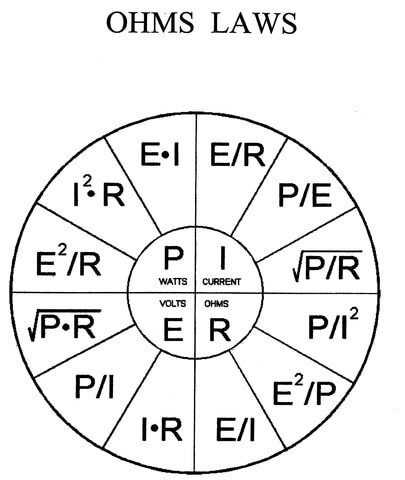Know your Ohms - it's not a suggestion, it's the Law
10th Jan 2016
Know your Ohms - it's not a suggestion, it's the Law
Ohm's Law - unless you've got an electrical background, this is probably a foreign concept. but it plays a huge role in everything we do as vapers. While the rise of high-powered regulated box mods has largely edged out the mechanical mods that required serious study into electrical theory in order to vape safely, a basic discussion about current can go a long way to improve your understanding of how exactly your device is turning an electrical charge into tasty, fluffy clouds.
Per Wikipedia, 'The law was named after the German physicist Georg Ohm, who, in a treatise published in 1827, described measurements of applied voltage [power delivered to a coil, for our uses] and current [power coursing through that coil] through simple electrical circuits containing various lengths of wire [the coils themselves].'
The way most beginning and intermediate vapers interact with Ohm's Law is by selecting a coil by its resistance, measured in ohm. It's fairly common knowledge that lower resistance coils are vaped at more power, which leads to bigger and/or warmer clouds. But why?
Here's two simple calculations: Current (measured in amperes) = Voltage / Resistance (measured in ohms), Power (measured in watts) = Current * Voltage
Let's suppose you've got a fresh 18650 battery charged to 4.2 volts, and you're going to deliver all that power to your coil. With a coil resistance of 1.0 ohm, you're going to be drawing 4.2 amps of power (4.2 / 1 = 4.2). But cut that coil's resistance to 0.5 ohm and you've increased your amperage draw to 8.4 (4.2 / 0.5 = 8.4).
Now, we can figure out how much power you're drawing in watts - with the 1.0 ohm coil (4.2 * 4.2) you get to 17.64 watts - not bad. But applying that same 4.2 volts of power to the 0.5 ohm coil (4.2 * 8.4) increases your wattage to 35.28.
So with all other things being equal, when you apply the same amount of power to a lower resistance coil, you get a greater power output, thus bigger clouds. Once you know what wattage you like best for a particular vape juice, most modern mods will allow you to 'set it and forget it,' letting the mod's computer chip measure your coil's resistance and decide how much power to deliver to the coil in order to achieve the desired result. You can see now, however, why lower resistance 'sub-ohm' coils with less than 1.0 ohm resistance are needed to deliver big power, as even two fully-charged batteries would have a problem pushing enough power into a high-resistance coil to deliver the kind of vape most users have come to expect.
Another way Ohm's Law helps us operate is in determining battery safety - remember, in our first two calculations we never went above a draw of 8.4 amps on the battery. But we also never got more than 35 watts out of our coils.
Let's now take a coil of 0.2 ohm resistance, a popular low-range power build with newer sub-ohm tanks (most builds below this level are designed for temperature control vaping, which limits the period of time a battery will pulse at full power). With a single battery operating at full power (4.2 / 0.2 = 21) we're now drawing 21 amps of power. Of course, we're also (21 * 4.2 = 88.2) delivering 88.2 watts of power.
You'll notice that most regulated box mods peak out at 70-80 watts for single-battery models. Why? Most batteries popular for vape use today (the ones that can be trusted, many fake-spec 'rewrappers' sadly exist to mislead consumers) have a maximum continuous discharge rating of 20 amps - try to suck more power than that out of a battery at once and your risk overheating your cells, causing them to vent (allow gases to escape) and/or explode. So since 80 watts is about the most you can expect out of a high-end battery, that's about the most power delivery you'll see from a single-cell mod.
There are a few 30 amp batteries on the market - the Sony VTC3 and VTC4 (the VTC5, despite popular mis-perception, is a 20 amp cell), and the LG HB2 are the only known 18650s reliably rated for a discharge of higher than 20 amps. While these primarily appeal to mechanical mod users, they're also useful to owners of new high-end 200 watt dual-battery box mods. Since you won't be able to get much above 160 watts with two 20 amp cells, consider seeking out one of the aforementioned if you're looking to actually push your mod all the way to 200 watts.
There's certainly an abundance of information available on this topic, and if you ever intend to get into using mechanical mods you'd be well served to continue your research, but let's leave this as the tip of the proverbial iceberg.

